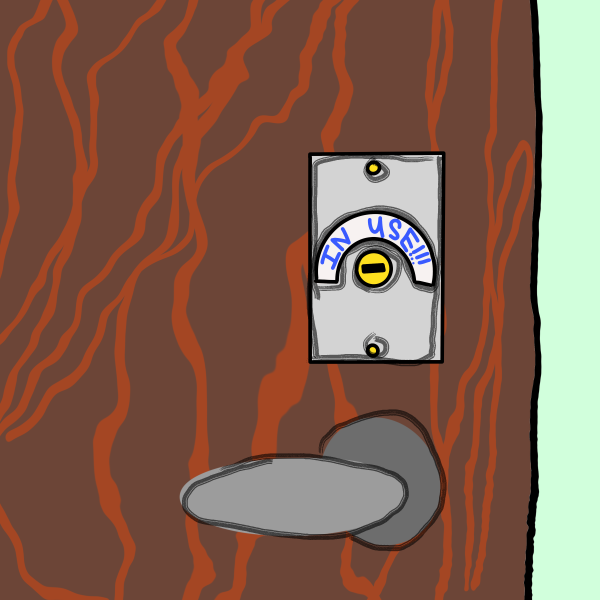How to Vote This Year
November 6th will be a historic election in Minnesota, and casting your ballot here or in your home state is easy and important.
October 18, 2018
Weeks before a historic election in a near-Trump state, and Hamline University is still. “No matter what happens, 2018 will be a banner year in Minnesota politics,” MinnPost noted in their excellent coverage of the playing field: the entire house of representatives, eight congressional districts, every constitutional office, the governorship and two senate seats due to the premature departure of Senator Franken. It will be an unusually high number of positions to vote for in a state which only went Democrat in 2016 by two points. The only party-representative group on campus, Hamline College Democrats, are entirely silent in the lead-up to November 9th with no events, no voter registration drives, and a social media post from August urging people to vote in the Primaries, but giving no information on how to do so.
“I want to vote, but I’m not from this state and I can’t drive to vote at home,” one transfer student said. In the absence of voting assistance from other organizations or groups on campus, it’s incredibly important for all students, faculty and staff at Hamline and the Midway in general to know their rights.
Minnesota has amongst the most liberal and open voting laws in the nation, and as a result has amongst the nations highest voter turnout to match. In 2016 it was the nation’s highest at 74 percent, but midterms are a different ballgame. Not as popular as presidential elections, midterms are perceived as unexciting and result in lower voter action: the last midterms only had a 50 percent turnout in Minnesota. Even in Presidential election years, younger voters leave it lacking. MinnPost reported, “We do know that in 2016, just 55 percent of 18- to 24-year-old Minnesota citizens (mostly millennials, with 18 and 20-year-old members of gen Z) turned out to vote.” The fact that so many positions are open this midterm in Minnesota makes it one of the more competitive states in the nation this November, and also makes it the state in which millennial voters have the highest impact according to the Center for Information and Research on Civic Learning and Engagement. This upcoming election is projected to be the nations first in which there are more millennials eligible to vote than baby boomers, who are themselves the highest turnout demographic in the country, and most solidly vote conservatively.
First off, Minnesota allows you to register to vote up to and including election day. That means that if you walk into your polling place on November 6th without having done any previous work, you can vote then and there so long as you bring with you one of the following: an ID with current name and address; a Photo ID and a document with current name and address; a registered voter who can confirm your address; a college student ID if you live on campus (as Hamline sends polling stations current lists of residents beforehand); a Notice of Late Registration if you already have valid registration in the same precinct under a different name or address; or a staff person of a residential facility who can confirm you live there. If you live on campus, the best and easiest bet is to bring your Hamline ID. If you live off campus, any photo ID and some document with your address listed (a utility bill, a copy of your lease, etc.).
If you cannot make it to the polls on Nov. 6, or if you live somewhere else in Minnesota and want to vote there (a good choice, as the metro area is solidly blue and rural districts can always use greater youth representation), you can request an Absentee Ballot through the mail. To do this all you need is an email address, an ID number (Social Security, MN Drivers License, or a state ID card) and to go to the MN Secretary of State’s website at mnvotes.sos.state.mn.us/ABRegistration/ABRegistrationStep1.aspx. If you want to receive a ballot to vote in the cities you’ll give them your college address, or if you want to receive a ballot to vote in your home district, give them the address of your residence there.
You can also vote Absentee if you are from another state, but are living in Minnesota temporarily. You should check your respective Secretary of State’s website for specific information regarding this. If you’re from Wisconsin, for instance, you must register to vote ahead of time, and then go to myvote.wi.gov, select “Vote Absentee” and request an absentee ballot from the State Clerk. Wisconsin recommends you mail back your ballots a week before election day. The deadline for requesting an Absentee Ballot from Wisconsin is November 1st at 5pm; but in both Minnesota and Wisconsin your vote will not count if the ballot is received after election day – so mail it back accordingly.
Polls in Minnesota are open from 7a.m. to 8 p.m. on Nov. 6, and if you show up at 7:59 p.m. they cannot turn you away. You can find your polling place at pollfinder.sos.state.mn.us/ , but if you live on campus or in the immediate neighborhood it is at the Hamline Hi-Rise (777 Hamline Ave N) which is the apartment building visible from campus looking east. Your employer is legally required to give you sufficient paid time off from your job to go and vote if you work on November 6th. You do not need to give them advanced notice, they cannot make you use personal leave or vacation time and you do not need to give them any proof of voting. You can give your employer this letter from the Secretary of State’s office notifying them of this legal obligation: sos.state.mn.us/media/3111/letter-to-employers-from-secretary-simon.pdf





